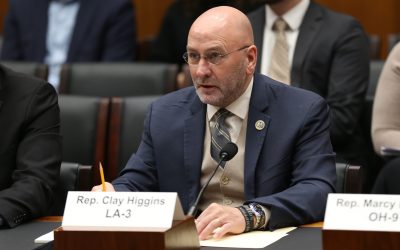What does the American Health Care Act do?
- The AHCA repeals and replaces Obamacare with free-market principles that provide greater access to cost-effective, patient-centered health insurance.
- The AHCA repeals the individual and employer mandates that were part of Obamacare, allowing individuals the freedom to purchase or not to purchase health insurance.
- The AHCA repeals nearly $1 trillion in Obamacare taxes.
- The AHCA provides measures to rebuild the marketplace, increasing competition and lowering premiums.
- The AHCA maintains coverage for pre-existing conditions.
- The AHCA preserves the ability for families to keep children on a family plan until age 26.
- The AHCA defunds Planned Parenthood, and ensures that federal dollars are not used to fund abortions.
- The AHCA restores flexibility and governance power to the 50 sovereign states so that they can respond to their own unique challenges.
Is Congress exempt from the American Health Care Act?
No, they are not exempt. In fact, the House unanimously passed legislation ensuring that Members of Congress and their staff will have the same health care as everyone else.
Pre-Existing Conditions
The American Health Care Act reaffirms the commitment from Congress to ensure Americans with pre-existing conditions are protected. Under the American Health Care Act:
- Insurance companies are prohibited from denying or not renewing coverage due to a pre-existing condition. Period.
- Insurance companies are banned from rescinding coverage based on a pre-existing condition. Period.
- Insurance companies are prevented from raising premiums on individuals with pre-existing conditions who maintain continuous coverage. Period.
To reduce premiums and empower states to innovate, the AHCA allows states to seek a limited waiver and adapt rules so that an individual’s health status can be considered when determing premiums, but only if that person has not maintained continuous coverage. This common-sense waiver option can help lower premiums overall and provide an incentive for individuals to get and stay covered. States that apply for these waivers must have established a risk-sharing program with the purpose of lowering premiums or other out of pocket costs for patients in the program. The waiver only applies to the individual insurance market, where roughly 7 percent of the country purchases coverage.
Again, if a person maintains continuous coverage, they cannot be charged more based on their health status. Period.
Patient & State Stability Fund
The American Health Care Act provides a solution to help repair the insurance market damaged by Obamacare and provide more cost-effective coverage options to consumers. The Patient & State Stability Fund is a new and groundbreaking fund that will help states lower the cost of care for some of their most vulnerable patients. The $138 billion fund will help repair state markets crippled by Obamacare. States can use the funds to: cut out-of-pocket costs, promote access to preventative services, promote participation in private health insurance, or to increase the number of options available in the market.
- $15 billion is dedicated to create a federal invisible risk pool
- $15 billion is dedicated toward mental health, substance abuse treatment, maternity, and newborn care.
- $8 billion dedicated solely to help lower premiums and other out-of-pocket costs for patients who have a pre-existing condition, live in a state with an approved waiver and risk mitigation program, have failed to maintain continuous coverage, and are purchasing health care in the individual market. A rare exception.
- This fund provides states with the flexibility and resources to stabilize markets and adapt to their own unique challenges.
Medicaid Expansion
- For 2017, 2018, and 2019, states with Medicaid expansion enrollees could continue to receive the enhanced federal match available under current law. The AHCA does not pull the rug out from anyone. Individuals who are Medicaid expansion enrollees can remain enrolled and receive benefits as long as they remain eligible.
- After January 1, 2020, any newly-enrolled patients will be matched a state’s regular matching rate, and not the enhanced rate offered under current law. This financing change allows states to keep a Medicaid program that serves low-income adults, but creates a level playing field for Medicaid spending so that the federal government is not prioritizing the cost of care for able-bodied adults above that of the most vulnerable.
Medicaid Per Capita Allotment Reform
A per capita allotment helps put Medicaid on a budget in a way that is fair and workable for states and taxpayers. It is an aggregate limit, calculated on a per capita basis, on the amount of Medicaid funding for which a state could receive federal matching. If an individual’s care proved to be more expensive than average, federal funding could continue to be used to pay for it as long as the state had not exceeded their total aggregate allowable amount based on the per capita formula.
- On its current path, Medicaid is on unsustainable financial footing. The AHCA put Medicaid on a budget while protecting access to care.
- Per capita allotment calculates federal funding based on the sum of enrollees across eligibility groups and provides flexibility to state leaders in implementing the policy.



